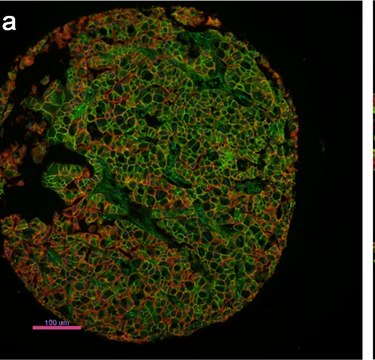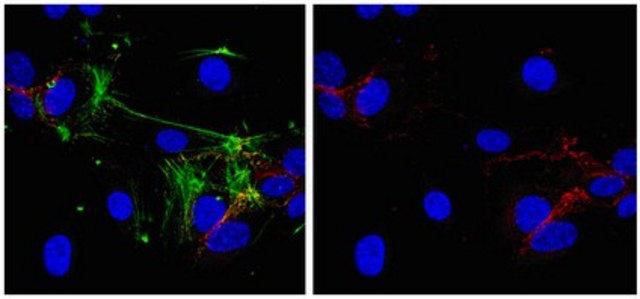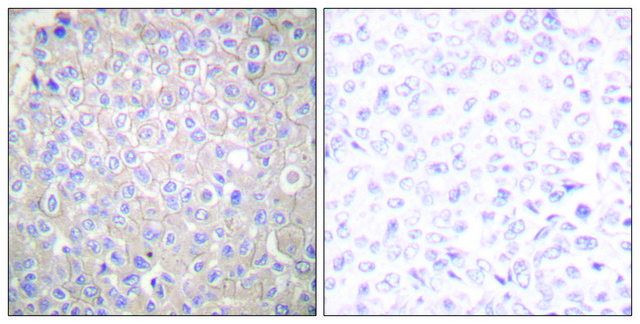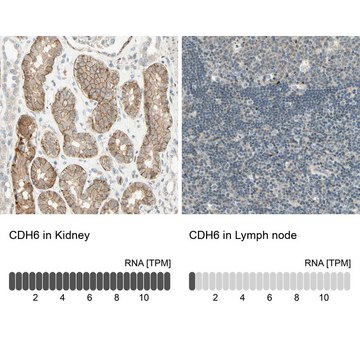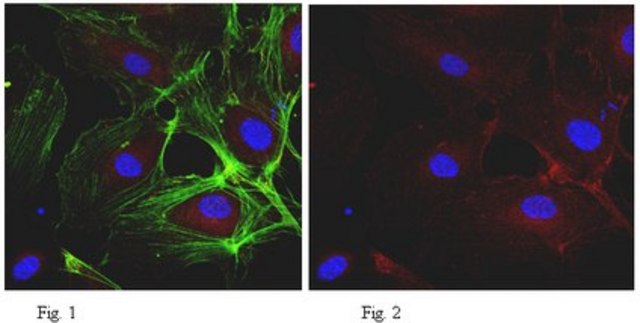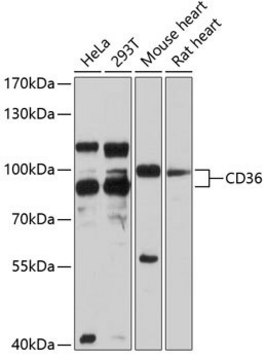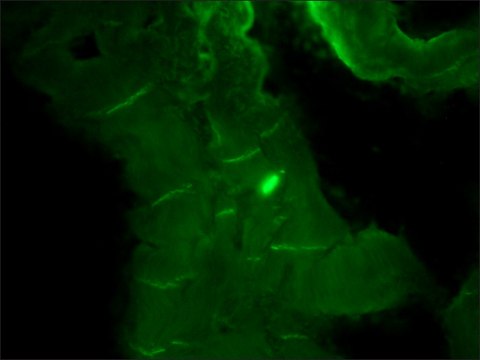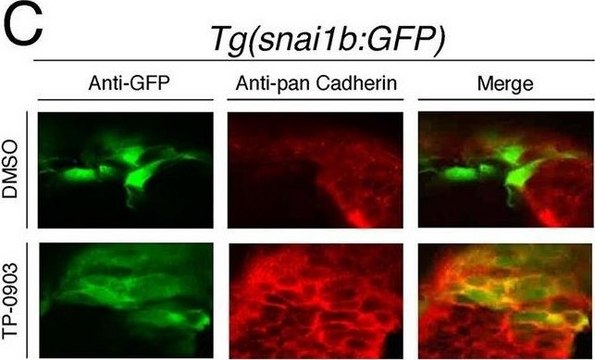推荐产品
生物来源
mouse
质量水平
抗体形式
purified from hybridoma cell culture
抗体产品类型
primary antibodies
克隆
CH-19, monoclonal
表单
buffered aqueous solution
分子量
~135 kDa
种属反应性
guinea pig, canine, frog, bovine, human, cat, monkey, rabbit, mouse, ferret, snake, hamster, chicken, Psammomys (sand rat), rat
浓度
~1.0 mg/mL
技术
immunoblotting: 0.125-0.25 μg/mL using HeLa cell extract
immunofluorescence: 5-10 μg/mL using HeLa cells
immunohistochemistry: suitable
同位素/亚型
IgG1
运输
dry ice
储存温度
−20°C
靶向翻译后修饰
unmodified
基因信息
human ... CDH1(999)
一般描述
Anti-Pan-Cadherin antibody, Mouse monoclonal (mouse IgG1 isotype) is derived from the CH-19 hybridoma produced by the fusion of mouse myeloma cells and splenocytes from a BALB/c mouse immunized with the synthetic peptide.
N-cadherin, also known as cadherin-2 (CDH2) or neural cadherin (NCAD) is mapped to human chromosome 18q12.1. N-cadherin has ectodomains comprising of 110 amino acidsand is called the extracellular cadherin (EC) domain. EC domains are critical for the adhesion function of N-cadherin.
特异性
Monoclonal Anti-Pan-Cadherin recognizes Cadherin from human, mouse, monkey, bovine, chicken, rat, ferret, canine, rabbit, pig, guinea pig, hamster, cat, frog, snake and psammomys origin. Monoclonal Anti Pan-Cadherin is reactive against a highly conserved sequence at the cytoplasmic C-terminal of N-Cadherin protein.
免疫原
synthetic peptide corresponding to the C-terminus of chicken N-Cadherin with an extra N-terminal lysine residue coupled with KLH.
应用
Anti-Pan-Cadherin antibody, Mouse monoclonal may be used in:
- immunoblotting
- immunofluorescence
- immunohistochemistry
生化/生理作用
N-cadherin plays a key role in the neurulation, which involves transition of neural plate into neural tube. It is present in the synaptic membrane and dimerises upon synaptic induction and mediates synaptic activity. N-cadherin mediates cell−cell adhesion in retina but favors tumor progression in retinoblastoma. It is upregulated in carcinomas and is critical for cell invasion. Irregular distribution of N-cadherin is implicated in dilated cardiomyopathy. Mutations in the CHD2 gene may probably contribute to obsessive-compulsive disorder (OCD) and Tourette disorder (TD).
外形
Solution in 0.01 M phosphate buffered saline, pH 7.4, containing 15 mM sodium azide.
储存及稳定性
Store at –20 °C. For continuous use, store at 2–8 °C for up to one month. For extended storage, freeze in working aliquots. Repeated freezing and thawing is not recommended. If slight turbidity occurs upon prolonged storage, clarify the solution by centrifugation before use. Working dilution samples should be discarded if not used within 12 hours.
免责声明
Unless otherwise stated in our catalog or other company documentation accompanying the product(s), our products are intended for research use only and are not to be used for any other purpose, which includes but is not limited to, unauthorized commercial uses, in vitro diagnostic uses, ex vivo or in vivo therapeutic uses or any type of consumption or application to humans or animals.
未找到合适的产品?
试试我们的产品选型工具.
储存分类代码
10 - Combustible liquids
闪点(°F)
Not applicable
闪点(°C)
Not applicable
法规信息
新产品
Apoptosis-related factors p53, bcl-2 and the defects of force transmission in dilated cardiomyopathy
Tsipis A , et al.
Pathology Research and Practice, 206(9), 625-630 (2010)
Structure and function of the N-cadherin/catenin complex in retinoblastoma
Van A, et al.
Investigative Ophthalmology & Visual Science, 43(3), 595-602 (2002)
Molecular modification of N-cadherin in response to synaptic activity
Tanaka H, et al.
Neuron, 25(1), 93-107 (2000)
Structure-function analysis of cell adhesion by neural (N-) cadherin
Tamura K, et al.
Neuron, 20(6), 1153-1163 (1998)
Structure and biochemistry of cadherins and catenins
Shapiro L and Weis WI
Cold Spring Harbor Perspectives in Biology, a003053-a003053 (2009)
我们的科学家团队拥有各种研究领域经验,包括生命科学、材料科学、化学合成、色谱、分析及许多其他领域.
联系技术服务部门